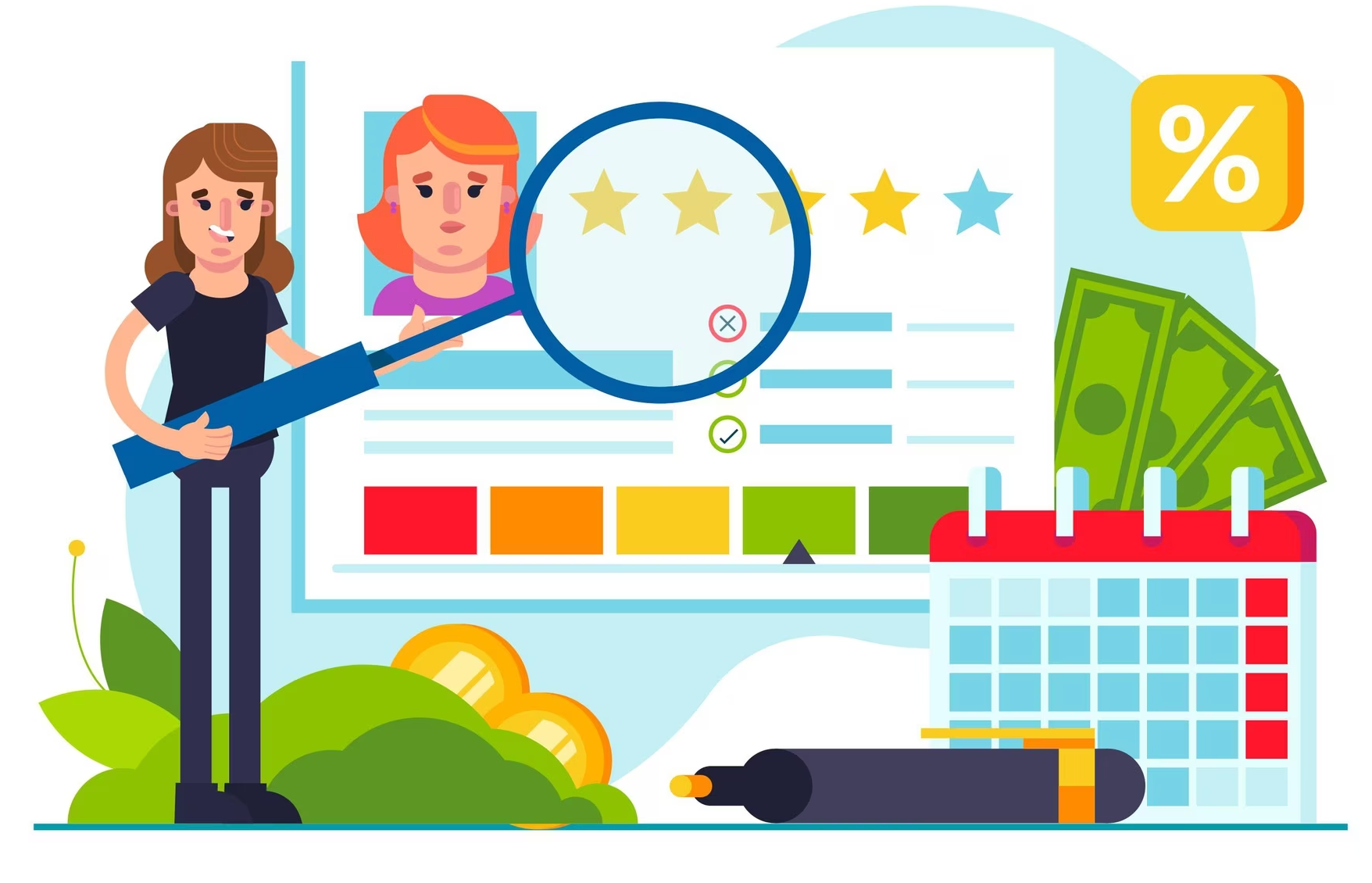Imagine building a sales prospect list that brings in an abundance of qualified leads, boosting your sales and driving success for your business. With our ultimate guide on sales prospect lists, sales reps will discover the secrets to finding and connecting with potential customers.
We’ll show you step-by-step how to:
- Define your target audience
- Leverage existing customers for lead generation
- Identify decision-makers in the sales process
- The steps to build a sales prospecting list for your marketing team
- Sales prospecting tools to use
- Harness the power of social media and online platforms
- Master email prospecting
- Utilize LinkedIn effectively
- Maximize referrals and strategic partnerships.
Get ready to elevate your sales game like never before!
Table of Contents
- Key Takeaways
- Understanding the Importance of Sales Prospecting Lists
- Step 1: Defining Your Target Audience
- Step 2: Leveraging Existing Customers for Lead Generation
- Step 3: Identifying Decision-Makers and Key Contacts
- Step 4: Harnessing the Power of Social Media and Online Platforms
- Step 5: Maintaining and Updating Your Prospecting List
- Best Practices for Email Prospecting
- Utilizing LinkedIn for Effective Prospecting
- More Sales Prospecting List Tools
- Mastering the Art of Cold Calling
- Maximizing Referrals and Strategic Partnerships
- Frequently Asked Questions
- What Are the Best Practices for Email Prospecting?
- How Can LinkedIn Be Effectively Utilized for Prospecting?
- What Are Some Tips for Mastering the Art of Cold Calling?
- How Can I Maximize Referrals and Strategic Partnerships for Lead Generation?
- What Are the Key Steps for Maintaining and Updating a Prospecting List?
- Conclusion
Key Takeaways
- Building a successful sales prospecting list requires understanding your product and how it solves customer pain points.
- Creating buyer personas based on your ideal customers helps target the right prospects.
- Investing in a CRM and using sales intelligence solutions can help collect and update contact data effectively.
- Implementing lead scoring can help prioritize leads and focus on the most relevant prospects.

Understanding the Importance of Sales Prospecting Lists
Understanding the importance of sales prospecting lists and a proper sales prospecting list format is crucial for your success in reaching potential customers and building strong relationships.
As a sales manager or consultant, you know that having a well-curated sales prospecting list is essential for your sales team to thrive. It provides them with the contact details of potential customers likely to be interested in your products or services.
By utilizing a targeted sales prospecting list, you can focus your efforts on engaging with the right individuals and increase your chances of converting them into loyal customers. This tailored approach allows you to effectively address their pain points and offer solutions that meet their specific needs.
Investing time and resources into building a quality sales prospecting list will benefit your team and your bottom line.
Looking to master the art of building a sales prospect list? Dive deep into our ultimate guide and discover the strategies that top sales professionals swear by. Darren, a seasoned sales expert, offers a step-by-step blueprint to help you effectively identify and engage with potential customers. Schedule a call with Darren today and take your sales prospecting to the next level.

The Proper Format for a Sales Prospecting List
A well-organized sales prospecting list is a crucial tool for sales professionals. It streamlines the sales process and ensures that every potential lead is approached systematically and efficiently. Here’s a guide to formatting your sales prospecting list for maximum effectiveness:
- Header Information:
- Title: Clearly label your document with a relevant title, such as “Sales Prospecting List – Q3 2023.”
- Date: Include the creation or last updated date for reference.
- Owner/Creator: Mention the name of the person responsible for the list.
- Prospect Details:
- Full Name: Always start with the prospect’s full name to personalize your approach.
- Job Title: Knowing their position can help tailor your pitch.
- Company Name: Essential for B2B sales to understand the business context.
- Industry: Helps segment and target your pitch based on industry-specific pain points.
- Contact Information:
- Email Address: A primary mode of communication for most sales processes.
- Phone Number: Essential for direct communication and follow-ups.
- LinkedIn Profile: Useful for understanding the prospect’s professional background and network.
- Company Website: Provides insights into the prospect’s business operations and needs.
- Engagement History:
- Last Contact Date: Helps in tracking the frequency of communication.
- Last Communication Mode: Whether it was an email, call, or in-person meeting.
- Notes: Brief notes on what was discussed, any feedback, or specific requirements mentioned.
- Qualification Criteria:
- Lead Source: Where did you find this lead? (e.g., trade show, referral, cold call)
- Lead Status: Categorize the lead (e.g., cold, warm, hot, closed).
- Pain Points: List the challenges or needs the prospect has expressed.
- Potential Solutions: How your product or service can address their pain points.
- Follow-Up:
- Next Follow-Up Date: Schedule the next touchpoint.
- Follow-Up Method: Decide on the mode of communication for the next interaction (e.g., email, call).
- Follow-Up Notes: Any specific points or topics to cover in the next interaction.
- Miscellaneous Information (Optional but can be useful):
- Company Size: Helps in understanding the scale and potential deal size.
- Location: Useful for planning in-person meetings or understanding time zones.
- Annual Revenue: Provides context about the company’s financial standing.
Tips for Maintaining Your Sales Prospecting List:
- Regularly Update: Ensure that the list is updated regularly with new information or changes in the prospect’s details.
- Segmentation: Group similar prospects together based on criteria like industry, location, or potential deal size.
- Use a CRM: Consider using a Customer Relationship Management (CRM) tool to automate and efficiently manage your prospecting list.
A well-formatted sales prospecting list is more than just a list of names and numbers. When used correctly, it’s a strategic tool that can significantly improve your sales process, making it more organized, efficient, and effective.

Step 1: Defining Your Target Audience
To effectively define your target audience, start by identifying the personas of your ideal customers. This step is crucial in building a successful sales prospecting list as it helps you tailor your marketing efforts and find qualified prospects who are more likely to convert into customers. Here’s how to do it:
- Create buyer personas: Develop detailed profiles of your ideal customers based on their demographics, behaviors, interests, and pain points. This will give you a clear understanding of who you should be targeting.
- Use prospect data: Gather data from various sources, such as customer surveys, website analytics, and social media insights to gather information about your potential customers. This data will help you identify patterns and trends among your target audience.
- Identify potential customers: Once you have created buyer personas and gathered prospect data, use this information to identify potential customers who match your ideal customer profile. This will ensure that you focus your sales efforts on the right people.

Step 2: Leveraging Existing Customers for Lead Generation
Start by leveraging your existing customer base to generate leads, get them down your sales funnel, and tailor your message specifically to their needs.
Your existing customers are a valuable source of information and potential referrals. Understanding their pain points and preferences allows you to create targeted campaigns that resonate with similar prospects.
Use the prospect information you have gathered from your current customers to build a comprehensive sales prospecting list. This list should include relevant contact details and any additional qualifying criteria specific to your target market.
With this information, you can focus your efforts on reaching out to qualified leads who are more likely to be interested in your products or services.

Step 3: Identifying Decision-Makers and Key Contacts
Identifying decision-makers and key contacts is crucial for effective sales prospecting and establishing meaningful connections with potential customers. When you build a prospect list, having the right people in mind is important.
Here are three steps to help you identify decision-makers and key contacts:
- Research job titles: Look for job titles that indicate decision-making authority, such as CEOs, CFOs, or VPs of Sales. These individuals are more likely to have the power to make purchasing decisions.
- Utilize LinkedIn: LinkedIn is a valuable resource for finding key contacts within an organization. Search for the company you’re targeting and explore their employees’ profiles to identify the relevant decision-makers.
- Network within your industry: Attend industry events and conferences where you can meet potential prospects face-to-face. Engage in conversations and exchange contact information with those who have decision-making roles.

Step 4: Harnessing the Power of Social Media and Online Platforms
Harness the power of social media and online platforms by engaging with potential prospects through comments, interactions, and relevant industry forums.
As a sales manager or consultant, you understand the importance of leveraging these platforms to connect with your target audience.
Utilize tools like LinkedIn Sales Navigator and others that make outreach campaigns (see “Tools” section below) to identify and reach out to potential leads.
Develop lead-generation campaigns that resonate with your prospects’ pain points and showcase the value of your products or services. Use prospecting tools to streamline your outreach efforts and maximize efficiency.
By actively participating in online discussions and forums related to your industry, you can position yourself as an expert and build credibility among potential prospects.

Step 5: Maintaining and Updating Your Prospecting List
To ensure the effectiveness of your prospecting efforts, it’s crucial that you regularly update and maintain your list of potential customers.
Here are three reasons why maintaining and updating your sales prospecting list is essential:
- Accurate Contact Data: By keeping your contact data up to date, you can ensure that you have the correct information for reaching out to potential leads. Outdated or incorrect contact information can lead to wasted time and missed opportunities.
- Generate More Leads: Regularly updating and maintaining your prospecting list allows you to add new leads as they become available. This ensures that you always have a fresh pool of prospects to reach out to, increasing your chances of generating more leads.
- Stay Relevant: The business landscape constantly changes, with companies opening, closing, merging, and evolving. Regularly updating your prospecting list lets you stay informed about these changes and tailor your outreach efforts accordingly.

Ready to transform your sales approach with a robust sales prospect list? Our comprehensive guide, backed by Darren’s expertise, unveils the secrets of successful list building. From leveraging tools like LinkedIn Sales Navigator to understanding the nuances of contact details, we’ve got you covered. If you’re keen on refining your sales process and boosting your outreach, book a session with Darren, our sales maestro, today.
Best Practices for Email Prospecting
Email prospecting is one of the most effective methods for reaching potential customers. As a sales manager or consultant, you understand the importance of using this strategy to connect with your target audience.
Email prospecting allows you to directly reach out to prospects and present them with the value and benefits of your products or services.
When building your prospect list, it’s crucial to consider factors such as job title and industry to ensure you are targeting the right individuals. This will increase the chances of success when engaging with potential customers.
As knowledgeable sales professionals, we know that personalization is key in email prospecting. Tailor your messages to address each prospect’s pain points and offer solutions that are relevant to their needs. By incorporating industry-specific terminology and providing relevant data and insights, you can demonstrate your expertise and build credibility with your prospects.

Utilizing LinkedIn for Effective Prospecting
Now that you have learned about best practices for email prospecting let’s explore how you can effectively utilize LinkedIn to build your sales prospect list.
Leverage the power of LinkedIn
LinkedIn is a valuable platform for identifying and engaging potential prospects professionally. Use these strategies to make the most of it:
- Connect with professionals in your target industry and engage with their content.
- Utilize LinkedIn search filters to find prospects based on criteria such as job title, company size, and location.
- Join relevant LinkedIn groups to establish your brand expertise and expand your reach.
Research company websites: Visit company websites to gather information about potential prospects. Look for key decision-makers and contact details to help you directly connect with them.
Tap into existing customer networks: Your existing customers can be a goldmine of referrals and introductions to new prospects. Leverage these relationships by asking satisfied customers for referrals or using their data to understand the companies you should target.
By incorporating these strategies into your sales prospecting efforts, you can use LinkedIn’s vast network and existing customer base to build a highly targeted and effective sales prospect list.

More Sales Prospecting List Tools
Here’s a list of sales prospecting list-building tools that sales reps can use, along with a brief description of how each tool works:
- LinkedIn Sales Navigator
- How it works: LinkedIn Sales Navigator is a premium tool offered by LinkedIn that allows sales professionals to find and connect with potential leads. It offers advanced search filters, lead recommendations, and real-time insights on saved leads. Sales reps can use it to target the right buyers, understand key insights, and engage with personalized outreach.
- Hunter.io
- How it works: Hunter.io is a tool that helps users find email addresses associated with a particular domain. Sales reps can use it to find the email addresses of potential leads from a specific company. It also provides a verification service to ensure the accuracy of the email addresses.
- ZoomInfo
- How it works: ZoomInfo is a comprehensive B2B contact database that provides detailed information about businesses and professionals. Sales reps can use it to access direct dials, email addresses, and other key details about potential leads. It also offers integrations with CRM tools to streamline the sales process.
- Snov.io
- How it works: Snov.io is an all-in-one lead generation and outreach platform. It offers features like domain search, LinkedIn integration, and a Chrome extension to find email addresses while browsing websites. Sales reps can use it to build a list of potential leads and initiate cold outreach.
- Adapt.io
- How it works: Adapt is a global B2B contact and company database. It provides access to business emails, direct dials, and other relevant information. Sales reps can use it to build a targeted list of potential leads and reach out to them effectively.
- GetProspect
- How it works: GetProspect is a LinkedIn lead-generation tool that allows sales reps to find business emails and build a list of leads. It offers a Chrome extension that can extract leads from LinkedIn profiles, making it easier for sales reps to gather contact information.
- UpLead
- How it works: UpLead is a B2B database and business contact data provider. It offers features like real-time email verification and enrichment. Sales reps can use it to search for potential leads based on various criteria and ensure the accuracy of the contact information.
- Leadfeeder
- How it works: Leadfeeder is a tool that shows companies that visit your website. Sales reps can use it to identify potential leads based on website activity and engage with them using the provided contact details.
- Clearbit
- How it works: Clearbit offers a suite of tools for sales and marketing teams. It provides real-time data enrichment for any email or domain, helping sales reps to gather detailed information about potential leads and engage with them effectively.
- D&B Hoovers
- How it works: D&B Hoovers provides sales intelligence and data to help businesses make informed decisions. Sales reps can use it to access detailed company profiles, industry analysis, and targeted leads lists.
These tools can significantly enhance the efficiency of sales reps in building a robust sales prospect list. By leveraging the features of these tools, you can ensure you’re reaching out to the right prospects with the right message.

Mastering the Art of Cold Calling
When cold calling, building connections rather than reading scripts is important. As a sales rep, you aim to establish a rapport with potential prospects and understand their needs. By taking a personalized approach and engaging in meaningful conversations, you can increase your chances of success.
Cold calling is an essential part of the sales prospecting process. It lets you directly reach out to potential customers and introduce them to your products or services. However, instead of relying on scripted pitches, aim to have authentic conversations that resonate with your prospects.
To master the art of cold calling, thoroughly research your prospecting list. Understand their industry, pain points, and how your offering can provide solutions. Tailor your approach based on this knowledge and highlight the value and benefits you can bring.

Maximizing Referrals and Strategic Partnerships
To maximize your sales potential, leverage referrals and strategic partnerships to expand your customer base effectively. These techniques help you tap into new networks and build trust and credibility with valuable customers.
Here’s how you can make the most of referrals and strategic partnerships:
- Maximize Referrals:
- Encourage satisfied customers to refer their friends and colleagues.
- Implement referral programs that incentivize customers to refer others.
- Develop automated systems to track and reward referrals.
- Forge Strategic Partnerships:
- Identify non-competing companies that share your target audience.
- Collaborate on joint marketing initiatives or co-host events.
- Leverage each other’s networks to expand reach and generate leads.

Frequently Asked Questions
What Are the Best Practices for Email Prospecting?
To effectively prospect via email, tailor campaigns to a highly-targeted list. Use emails to nurture and educate ideal prospects, ensuring immediate interaction with responding leads. Focus on building connections rather than reading scripts.
How Can LinkedIn Be Effectively Utilized for Prospecting?
To effectively utilize LinkedIn for prospecting, connect with professionals and use Chrome extensions to find contact details. Join relevant groups to establish expertise. Engage with prospects through comments and interactions on the platform.
What Are Some Tips for Mastering the Art of Cold Calling?
To master the art of cold calling, remember that 82% of buyers accept meetings when contacted by a sales professional. Use accurate data from lead generation platforms, focus on building connections, and tailor your pitch for success.
How Can I Maximize Referrals and Strategic Partnerships for Lead Generation?
To maximize referrals and strategic partnerships for lead generation, focus on cultivating relationships with satisfied customers and non-competing companies. Implement automated referral systems, engage with prospects through social media, and seek collaboration opportunities.
What Are the Key Steps for Maintaining and Updating a Prospecting List?
To maintain and update a prospecting list, regularly review and verify contact information, remove outdated leads, and add new prospects. Utilize CRM software to streamline the process and ensure accurate data for effective sales prospecting.

Conclusion
Building a quality sales prospect list is crucial for the success of your sales efforts.
By understanding your target audience and leveraging existing customers for lead generation, you can identify decision-makers and key contacts who are more likely to convert into customers.
Harnessing the power of social media and online platforms and utilizing email prospecting, LinkedIn, cold calling, and referrals can further enhance your prospecting strategy.
Remember to update and maintain your list to ensure its accuracy continuously.
Following these best practices and utilizing tools like Cognism can save time and costs while accessing valuable buyer intent data.
Build a strong prospect list today to drive sales and achieve your business goals.
Boost your sales game with our definitive guide on building a sales prospect list. Darren, with his vast experience in sales and prospecting, offers invaluable insights to help you navigate the challenges of list building. Whether you’re starting from scratch or looking to enhance your existing list, Darren’s guidance is a game-changer. Don’t miss out—secure a call with Darren today and equip yourself with the best sales prospecting strategies.

